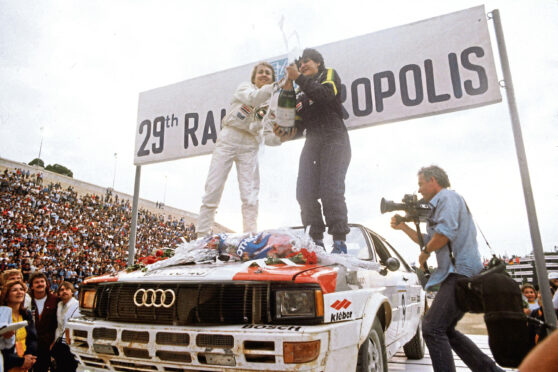
Women aren’t typically associated with motor racing and rallying but they have been tearing up the asphalt since 1897, competing against men but their achievements overlooked.
Author Rachel Harris-Gardiner tells Laura Smith the Honest Truth about history’s Speed Queens.
What inspired you to write this book?
I’ve been blogging about the subject for a long time, having started idly Googling female Formula 1 drivers while at university. The sheer number of women who have raced and rallied, going back far longer than I thought, made me want to give them back their proper place in motorsport’s grand narrative. A lot of them were famous and admired in their time, yet their stories didn’t fit and they got edited out.
Who were the very first female racing drivers?
There was a French championship for ladies on motorised tricycles in Paris as far back as 1897. Lea Lemoine, the winner of the 1897 event, did her first race against a mixed field only a couple of months later, finishing fifth.
What challenges did these early racers face?
Motorsport was extremely risky for anyone. The biggest hurdles were put up by the US motorsport authorities, which prohibited women from their competitions. Even a driver like Camille du Gast, a French woman who had been running in intercontinental races since 1901, wasn’t allowed to enter the 1902 New York to San Francisco race. The ban was made official in 1909, after US driver Joan Newton Cuneo started winning races and they became nervous about what would happen if a woman was seriously hurt.
Divina Galica was extremely resourceful. She used her fame as an Olympic skier to pick up some really good drives, including a couple of Grand Prix attempts in 1976 and 1978.
Who was Annie Bousquet?
Annie Bousquet was a French-Austrian sports-car racer who died in an accident at Reims in 1956. Her crash and the negative publicity that went with it was one of the reasons the Automobile Club de l’Ouest, which organises the Le Mans 24 Hours, was wary of accepting female entries between then and 1971. Weirdly, in the 1930s, there were several women drivers in every Le Mans race.
Did women struggle for sponsorship?
This is more of an issue now. As the motorsport career ladder has become formalised, there are fewer ways of cutting corners to get onto the grid, or opportunities to be canny, like Divina Galica.
Who are some of history’s most trailblazing speed queens?
Michele Mouton came close to winning the World Rally Championship in an Audi in 1982. We have to acknowledge Maria Teresa de Filippis as well, the first woman to enter a championship Formula One race in 1958. She was a contemporary of Annie Bousquet and would probably have raced at Le Mans without the unofficial ban.
Were there any early Scottish females racers?
Michaelle Burns-Greig, from Duns in the Borders, raced in the British Saloon Car Championship, the forerunner of the BTCC, in the 1960s. There have been lots of Scotswomen on four wheels over the years: Susie Wolff, from Oban, came close to a Formula 1 drive in 2015 and Louise Aitken-Walker from Duns won the FIA Ladies’ World Rally Championship in 1990.
Are women-only races helpful in promoting female drivers?
As it looks like with W Series, an all-female racing championship launched in 2018, these championships often run out of money quite quickly and there isn’t normally a real route into “bigger” competition for even the most successful.
What can motorsport learn from the early Speed Queens?
The wider motorsport world could do with a few more ingenious and, frankly, devious people like the old Speed Queens, who weren’t bothered by preconceived ideas of what a racing driver should look like or be like, and used whatever tools they had to prove themselves.
Speed Queens: A Secret History Of Women In Motorsport, Pen and Sword, £22, out now

Enjoy the convenience of having The Sunday Post delivered as a digital ePaper straight to your smartphone, tablet or computer.
Subscribe for only £5.49 a month and enjoy all the benefits of the printed paper as a digital replica.
Subscribe